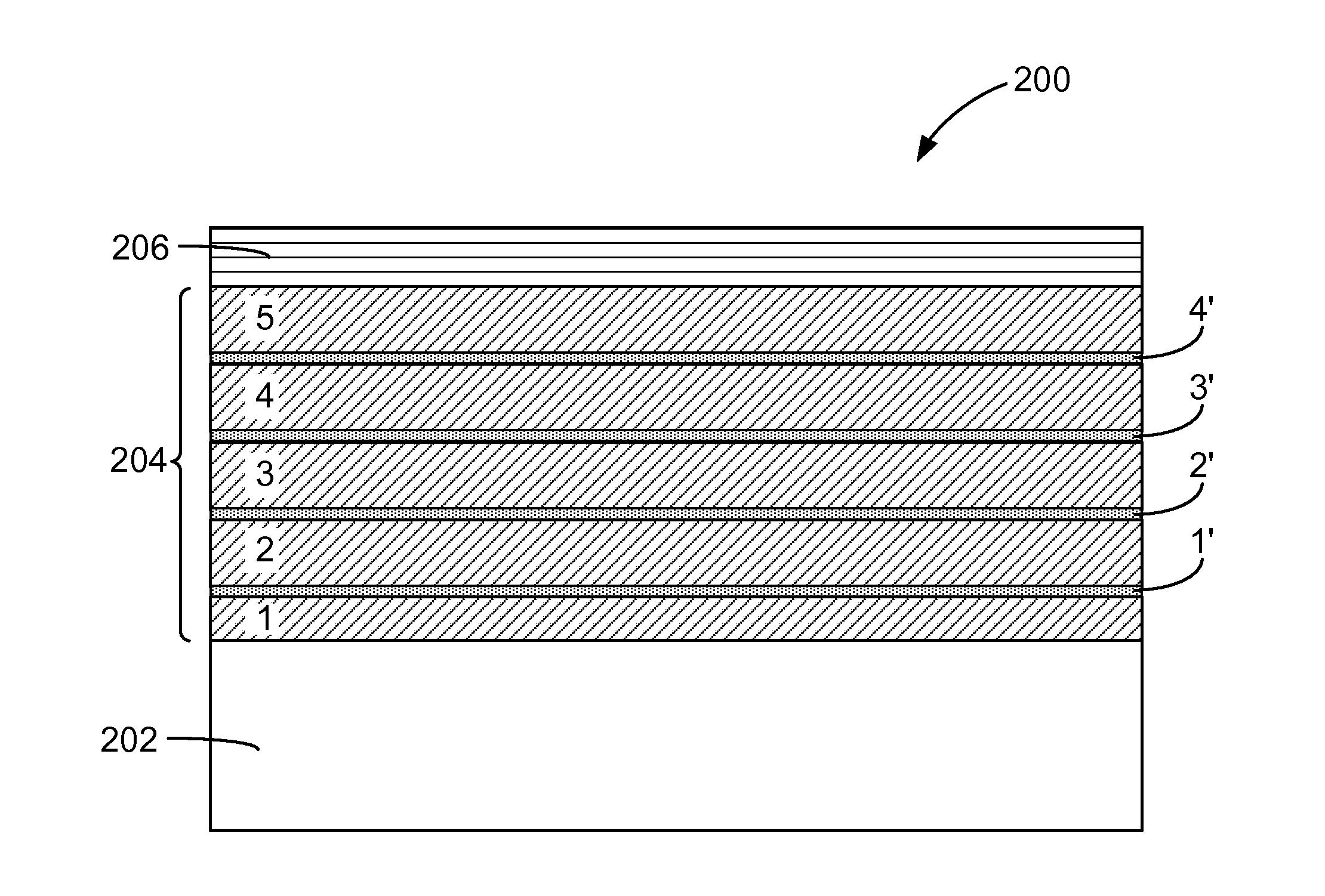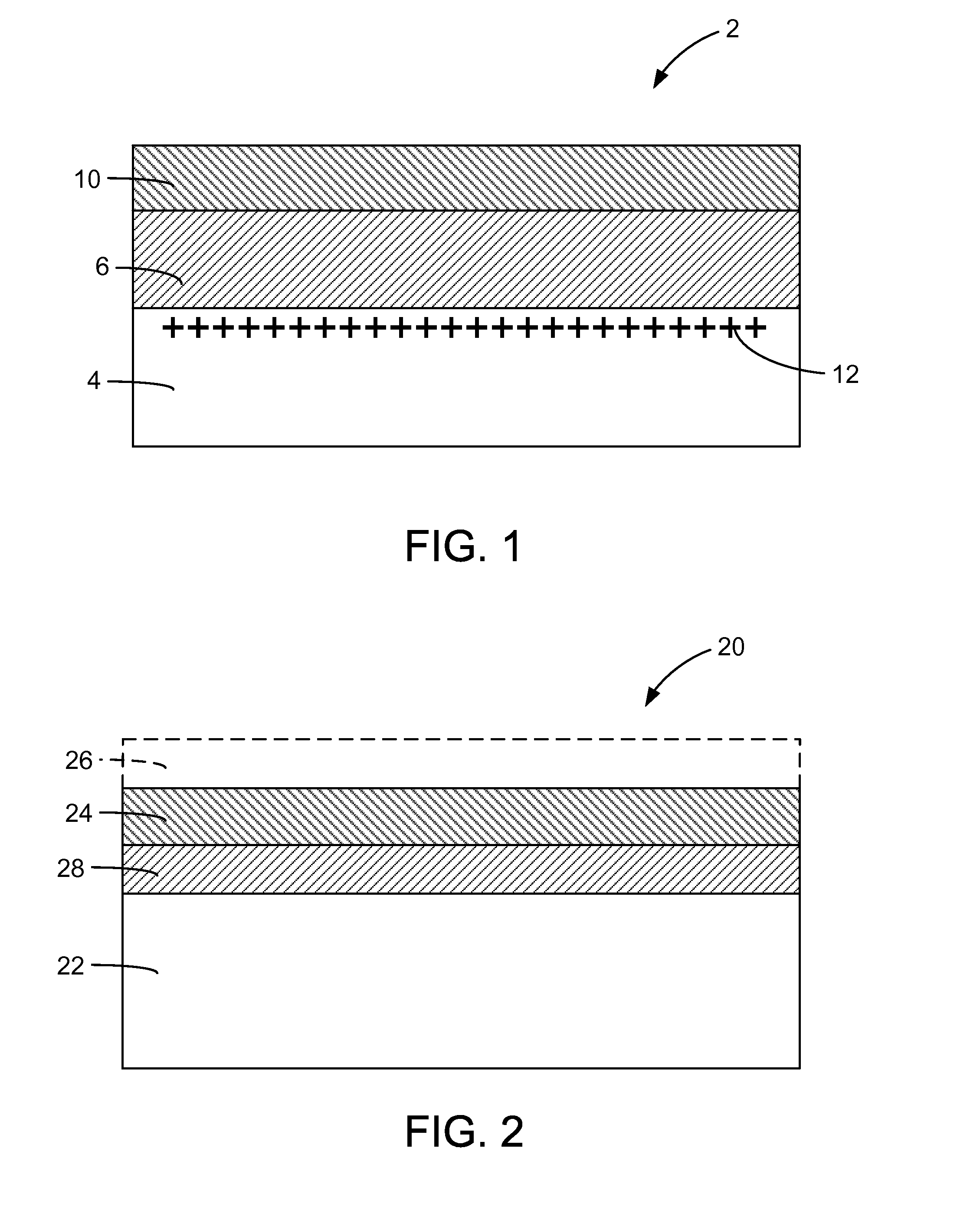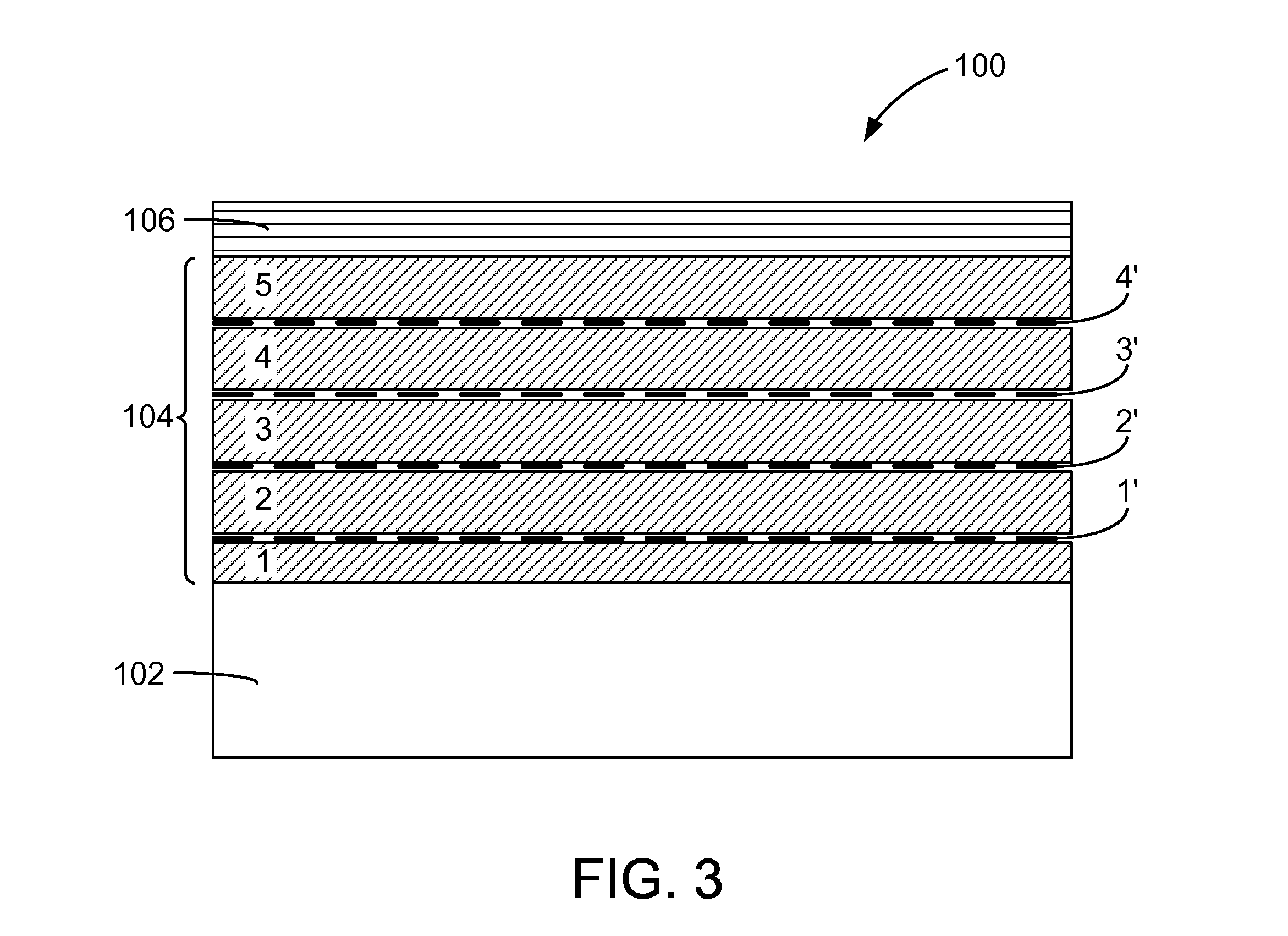Method of manufacturing high resistivity soi wafers with charge trapping layers based on terminated si deposition
a technology of charge trapping layer and soi wafer, which is applied in the direction of semiconductor devices, semiconductor/solid-state device details, electrical apparatus, etc., can solve the problems of wasting one of the substrates, not having suitable thickness uniformity, and time-consuming and costly methods
- Summary
- Abstract
- Description
- Claims
- Application Information
AI Technical Summary
Benefits of technology
Problems solved by technology
Method used
Image
Examples
example 1
[0056]A multilayer structure 100 of the invention is illustrated in FIG. 3. The multilayer structure 100 comprises a high resistivity silicon substrate 102, a charge trapping layer 104, and a CVD oxide layer 106. The CVD oxide layer 106 deposited in a chemical vapor deposition (CVD) system. The charge trapping layer 104 comprises multiple passivated layers 1, 2, 3, 4, and 5 of amorphous silicon, each of the layers separated by an interim layers 1′, 2′, 3′, and 4′. Preparation of the multilayer structure 100 was according to the following protocol.
[0057]200 mm single side polished high resistivity single crystal silicon wafer substrate 102 with resistivity >750 Ohm-cm (SunEdison, Inc.; St. Peters, Mo.) was subjected to thermal oxidation to prepare a silicon oxide layer on the front surfaces of the wafer substrate 102. A charge trapping layer 104 comprising amorphous silicon was deposited on the oxidized surface with multiple termination and exposure to N2 atmosphere. The amorphous si...
example 2
[0065]A multilayer structure 200 of the invention is illustrated in FIG. 4. The multilayer structure 200 comprises a high resistivity silicon substrate 202, a charge trapping layer 204, and a CVD oxide layer 206. The CVD oxide layer 206 deposited in a chemical vapor deposition (CVD) system. The charge trapping layer 204 comprises multiple passivated layers 1, 2, 3, 4, and 5 of amorphous silicon, each of the layers separated by an oxide layer 1′, 2′, 3′, and 4′. Preparation of the multilayer structure 200 was according to the following protocol.
[0066]200 mm single side polished single crystal silicon wafer substrate 202 with resistivity >750 Ohm-cm (SunEdison, Inc.; St. Peters, Mo.) were subjected to thermal oxidation to prepare a silicon oxide layer on the front surfaces of the wafers. A charge trapping layer 204 comprising amorphous silicon was deposited on the oxidized surfaces with multiple termination and exposure to O2 atmosphere. The amorphous silicon was deposited in LPCVD re...
PUM
| Property | Measurement | Unit |
|---|---|---|
| resistivity | aaaaa | aaaaa |
| resistivity | aaaaa | aaaaa |
| resistivity | aaaaa | aaaaa |
Abstract
Description
Claims
Application Information
 Login to View More
Login to View More - R&D
- Intellectual Property
- Life Sciences
- Materials
- Tech Scout
- Unparalleled Data Quality
- Higher Quality Content
- 60% Fewer Hallucinations
Browse by: Latest US Patents, China's latest patents, Technical Efficacy Thesaurus, Application Domain, Technology Topic, Popular Technical Reports.
© 2025 PatSnap. All rights reserved.Legal|Privacy policy|Modern Slavery Act Transparency Statement|Sitemap|About US| Contact US: help@patsnap.com



